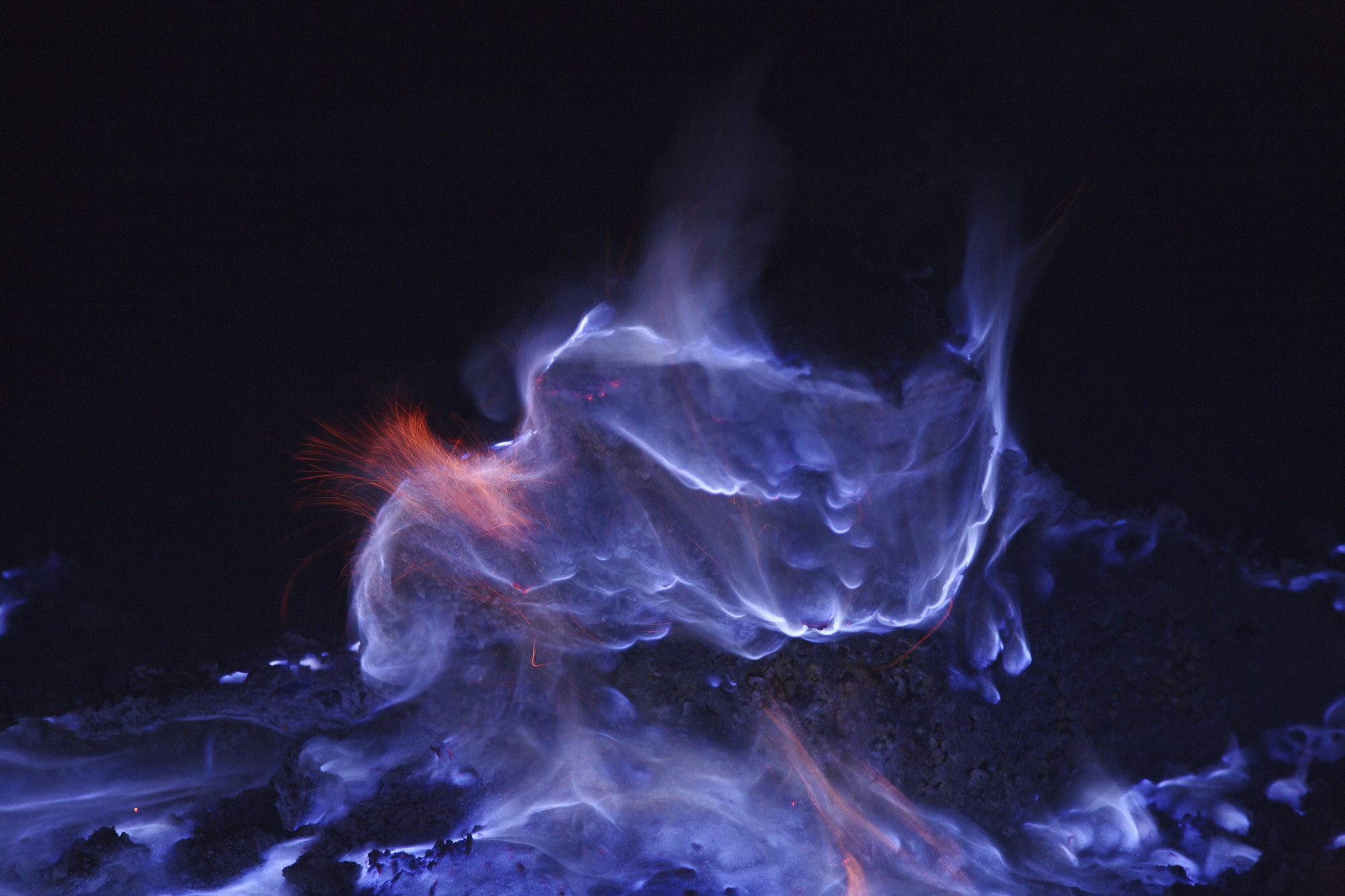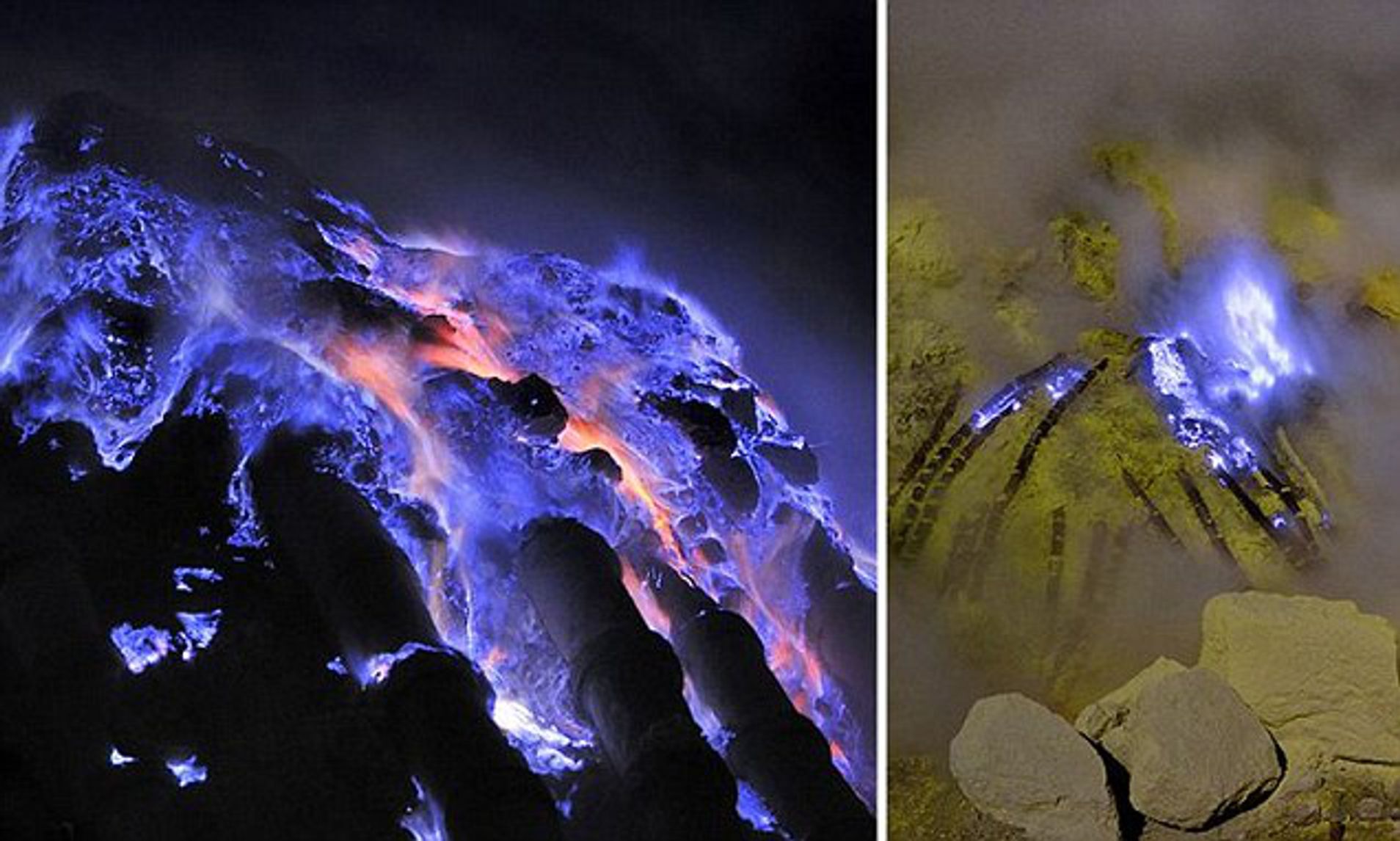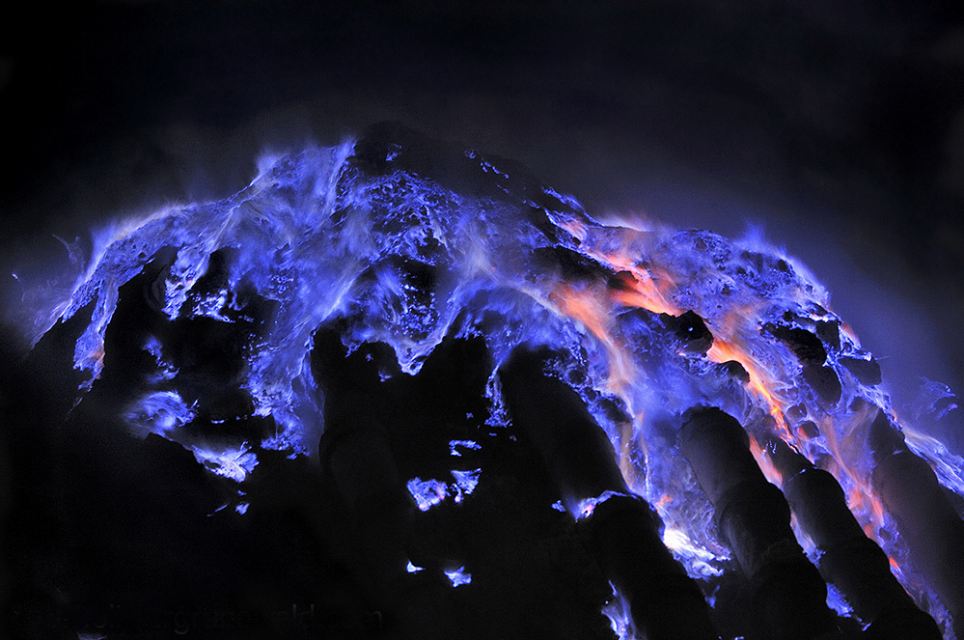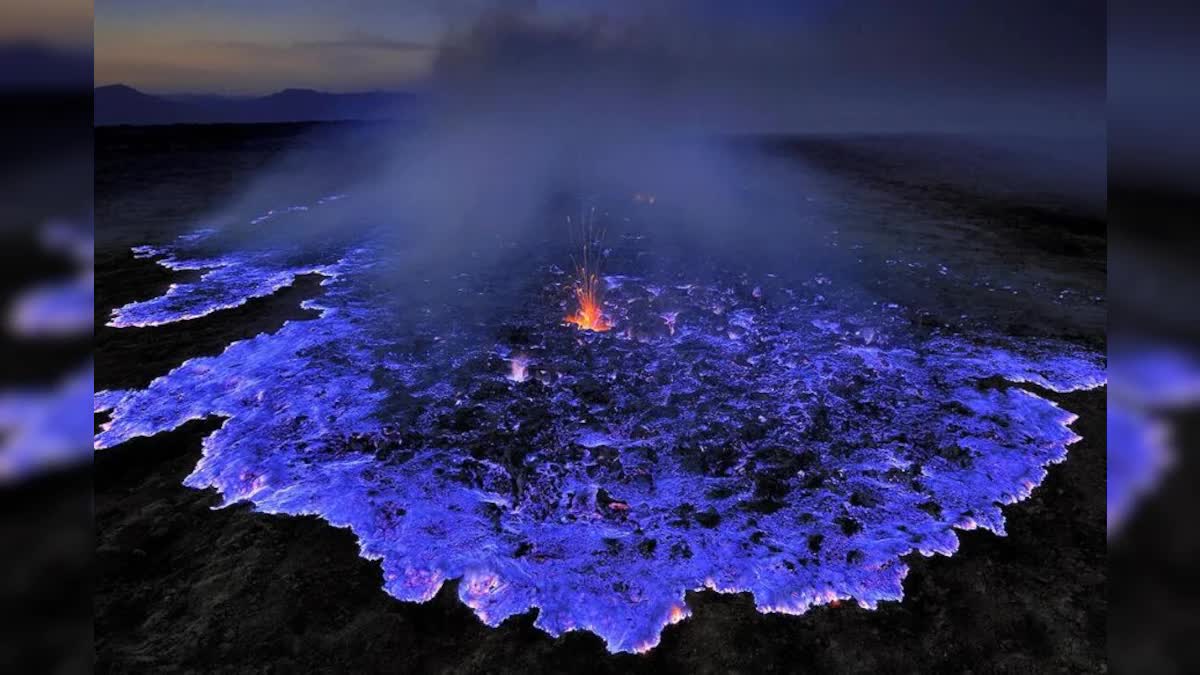For several years, Paris-based photographer Olivier Grunewald has been documenting the Kawah Ijen volcano in Indonesia, where blue lava can often be seen flowing down the mountain at night.
“This blue light is unusual for a volcano,” Grunewald told National Geographic in an email about Kawah Ijen, a volcano on the island of Java.
In fact, this blue color is the light produced by the burning of sulfuric gas at night, while the actual color of the lava is still red. These gases emerge from cracks in the volcano at high pressures and temperatures, up to 600 degrees Celsius. When exposed to air, they ignite and produce flames up to 5 meters high. Some of the gas then condenses into liquid sulfur, which continues to burn as it flows down the mountain slopes, giving the impression of flowing lava.

At first glance, you might think that the blue light in these images is coming from a nebula or a planet deep in space. In fact, it was created during the combustion of sulfur flowing from the side of the Kawah Ijen volcano, part of the Ijen volcanic complex in East Java, Indonesia.
Cynthia Werner, a research geologist with the United States Geological Survey (USGS) at the Alaska Volcano Observatory, told National Geographic that Grunewald’s pictures show this is indeed an unusual phenomenon. .
“I’ve never seen this much sulfur flowing in a volcano,” she said. According to Werner, it is relatively common to find molten sulfur around volcanic vents (hot vents). This mineral has a relatively low melting point, around 115 degrees Celsius, and temperatures at hot vents often exceed that.
According to Grunewald, lava phenomena described as blue have been described in antiquity in Italy, on the southern slopes of Mount Vesuvius and on the island of Vulcano.
He added: “Blue flames can also be observed at the base of erupting volcanoes, when ash explosions occur.”

Local miners laid ceramic pipes from mountainside vents to collection points inside a large crater, where the molten chemical was allowed to cool before being broken down and carried away. These sub-miners depend on sulfur for their livelihood, and they have to work in difficult conditions at the bottom of the crater.
Kawah Ijen Crater Lake, atop the volcano, is the largest body of hydrochloric acid in the world. In fact, it is the acid that gives the water its blue color.
Werner explains how the lake became so acidic: Volcanoes release hydrogen chloride gas, which reacts with water and forms concentrated hydrochloric acid with a pH of almost zero. As the combustion gas cools, they will cause sulfur to deposit around the lake.
To speed up mineral formation, a mining company installed ceramic tubes over an active hot vent, said John Pallister, a USGS geologist who has studied volcanoes. near the edge of the lake.
The pipes carried the sulfur gas down the slope of the vent. As the gases cool, they condense into liquid sulfur, which then flows or drips from pipes and solidifies into hard sulfur mats.
After the solid sulfur had cooled, the miners would break it up and carry it out of the mountains on their backs.

While the mountain’s usual lava appears bright red during the day, at night it emits an eerie blue glow.
“I’ve also seen miners spray water from a small pump onto pipes to promote cooling and condensation,” Pallister said by email. “Sulfur stalactites sometimes form from liquid sulfur dripping from pipes. They are collected and sold to tourists.”
Pallister added, “I have been told that miners sometimes burn sulfur or sulfur gas to produce a blue flame that is very prominent in nighttime photographs.”
Miners have been mining sulfur here for more than 40 years. They sometimes work at night under the eerie blue light to escape the heat of the sun and earn extra income, says Grunewald.
Companies mine and sell sulfur for about 600 Indonesian rupiah per kilogram, Grunewald said. They can lift 80 to 100 kilograms once a day — or twice if they work at night.

When Grunewald photographed Kawah Ijen, he had to wear a respirator to protect against toxic gases, including sulfur dioxide. “We wouldn’t be able to stay long in such a densely acidic environment without taking precautions,” said Grunewald.
Pallister describes the day-to-day work of miners as “difficult tasks”. He had seen many of them just use wet wipes as respirators.
Grunewald said some of the miners had gas masks that guests gave them, but they “didn’t have the money and couldn’t afford to change the filters”.

Grunewald also recorded blue light on the Dallol volcano in the Danakil Depression, in the Afar region of Ethiopia near the border of Eritrea and Djibouti.
The heat of the magma sometimes ignites sulfur dust in the soil, forming blue flames that cover the red lava at night.
“It’s very rare for us to see this scene because during the day we won’t be able to see the color of the flames clearly,” says Grunewald.
